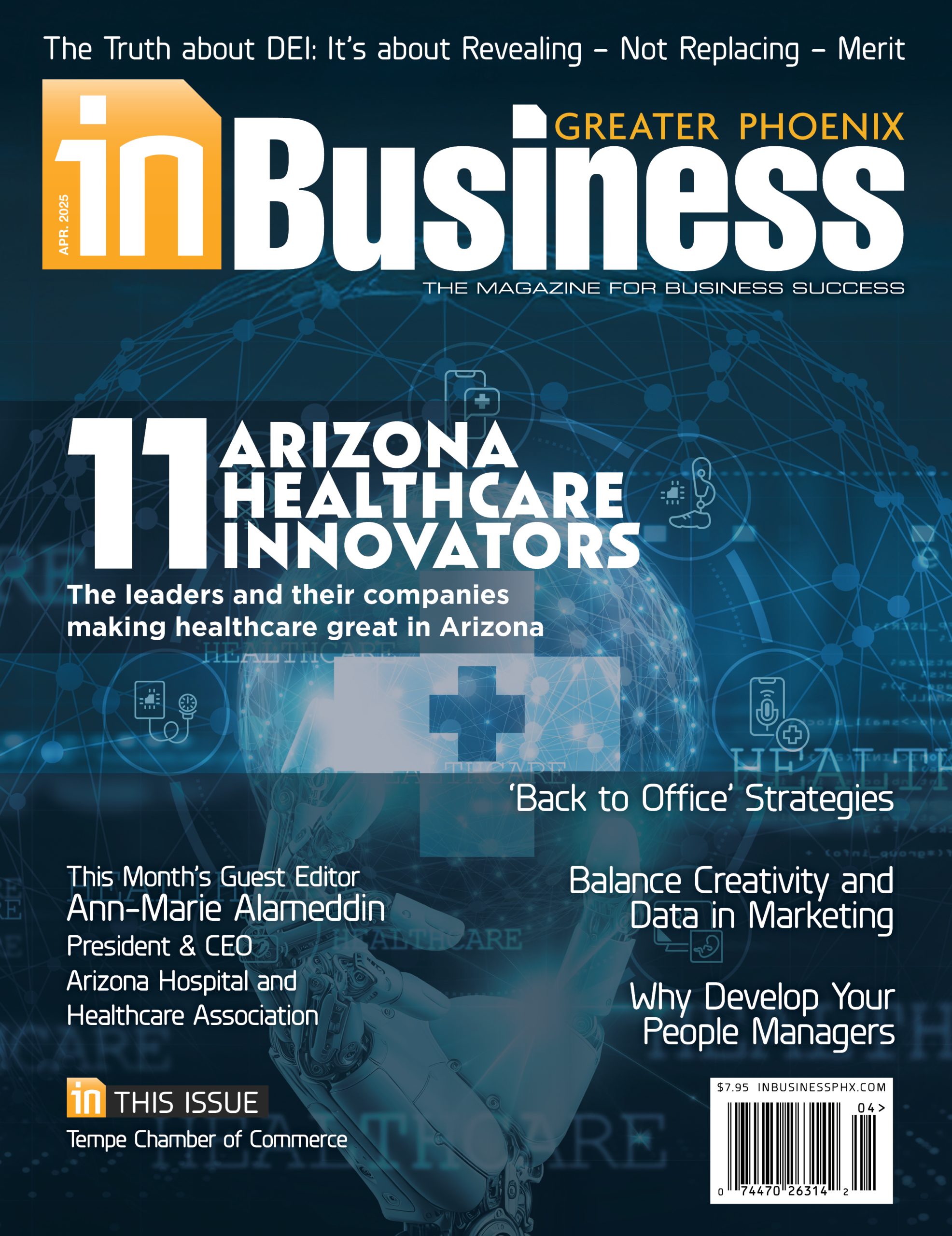The West Valley is booming. Our growing population and major economic drivers like TSMC, tech companies and data centers are fueling this expansion, requiring thoughtful planning to ensure we have the infrastructure to support it.
WESTMARC recently revised our strategic plan to prepare for the next decade of economic growth with advanced industries and new companies and residents who will live in this smart region. We’ve been engaging audiences on key topics like infrastructure investments such as power, water and transportation through our new breakfast series launched earlier this year.
Recently, we held a panel discussion on “Powering the Future: Energy Demand & Infrastructure,” by convening experts from utilities, energy development, and economics. Their message was clear: We need a comprehensive, “all of the above” approach to energy infrastructure.
Economist Jim Rounds emphasized that robust infrastructure underpins everything from data centers to residential cooling and critical facilities like hospitals. Without sufficient investment, economic growth could be stifled, costing the state billions in lost tax revenue and hundreds of thousands of jobs. “It’s really important to keep up and actually stay slightly in front of it,” he says. Infrastructure projects require significant lead time, and delays could hinder progress.
Ensuring we’re proactive with our energy needs, APS and SRP are at the forefront of planning for these advanced industries in an environment of evolving energy needs. While residential energy use fluctuates, manufacturers and data centers require 24/7 power. Looking 15 years ahead, APS is adjusting its strategies to ensure reliability for all customers, with a key focus on diverse energy solutions, including battery storage, to prevent demand from outpacing supply. Similarly, SRP’s most recent resource plan identifies the need to at least double its resource capacity by 2035, including adding 1,500 MW of battery storage, stating, “Meeting customers’ needs over the next decade will require a complete transformation of our power system.”
With the region’s rapid expansion, the demand for affordable and reliable energy is surging. Generating power and renewable energy sources is one side of the equation and battery storage is the other, as an essential component of modern energy infrastructure. Panelists explained that battery storage systems store excess energy during high production periods and release it during low production, balancing supply and demand. Further, as a capacity resource, it helps meet peak demand, especially during extreme summer heat. Battery storage enhances grid stability and reliability by preventing frequency and voltage fluctuations, preventing widespread power disruptions.
Furthermore, a robust energy sector creates high-wage jobs and generates increased tax revenue, strengthening the local economy. This positive impact is evident in Arizona, where concerted efforts by our economic development agencies, in partnership with the state’s utilities — collaborating on joint investments in “all of the above” energy strategies — have helped position the state as a top destination for technology companies.
The challenges we face are not just technical; they involve policy and public awareness. Generally, energy is taken for granted; we expect the lights to turn on with a flip of a switch and our devices to charge without a second thought. This reliability is possible thanks to infrastructure planned and built years ago. As our region’s power demands evolve and grow, it’s crucial for everyone to understand the ongoing need for investment and recognize that the grid operates from a regional perspective and every community benefits by playing a part in our collective energy security and regional success.
Equally important is educating communities on the necessity of these projects, including the safety measures surrounding battery storage. The industry has made tremendous advancements in recent years, incorporating best-in-class technology and rigorous safety measures to mitigate risks and protect surrounding communities. Regulatory codes and standards have played a crucial role in these improvements, providing comprehensive guidelines for system installation, testing and risk mitigation strategies.
To sustain the region’s momentum and rise of competitors in neighboring states, we must commit to building a diverse and resilient energy infrastructure that supports both current and future needs. This is not just about powering our economy — it’s about securing a high quality of life for everyone who calls the West Valley home.
Sintra Hoffman is president and CEO of WESTMARC.


















